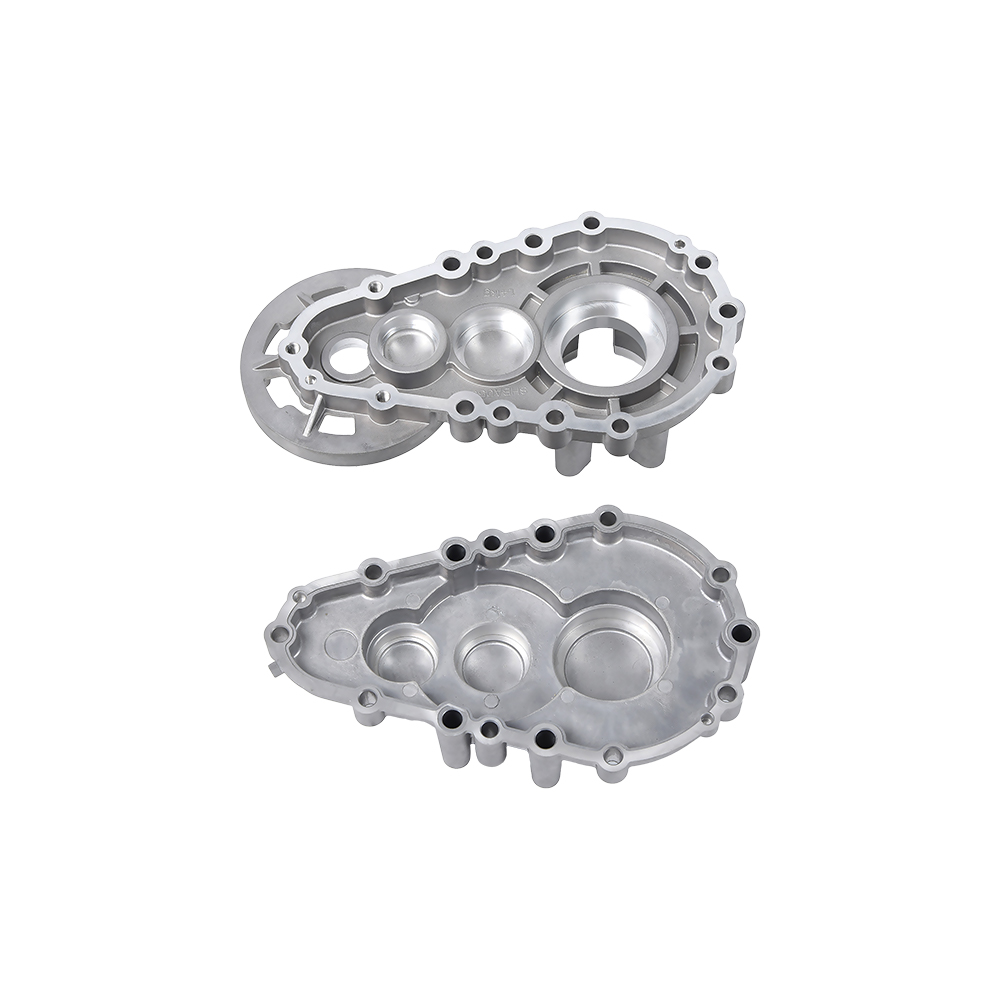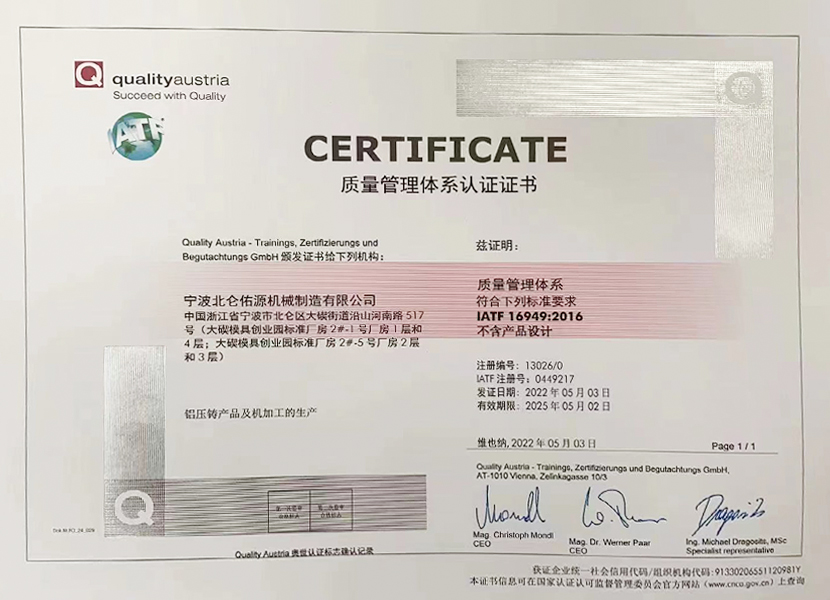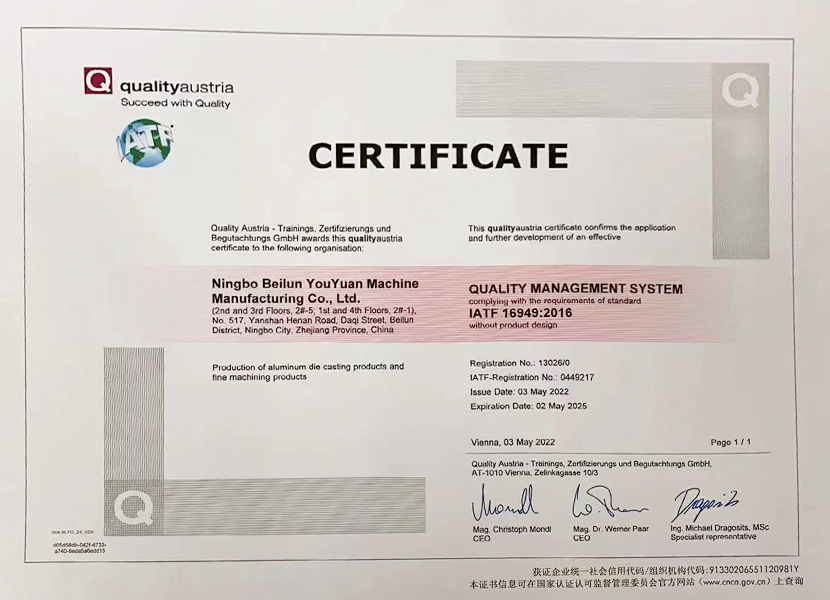Web Menu
Product Search
Exit Menu

Product Series
Hydraulic Brake Pump
- Description
- Contact Us
Related Products
-

Motorcycle Crankcase
Cat:Aluminum Die Casting
The motorcycle crankcase is a crucial component in the internal combustion engine system, serving as...
See Details -

Aluminum Die Casting Motor Guard Plate
Cat:Aluminum Die Casting
The aluminum die-casting motor guard plate is a pivotal component in the automotive industry, exempl...
See Details -

Aluminum Die Casting Hydraulic Valve
Cat:Aluminum Die Casting
Aluminum die-casting hydraulic valve represents a pinnacle of engineering precision and efficiency i...
See Details -

Planting Gear Box Of Left Right Rice Transplanter Of Spare Parts
Cat:Aluminum Die Casting
Our Left/Right Transplanter Gearbox Accessory - Planting Gearbox is a high-quality agricultural mach...
See Details -

Galvanized Hydraulic Valve Block
Cat:Aluminum Die Casting
Galvanized hydraulic valve block is a kind of valve block that has been galvanized to prevent corros...
See Details -

Driver Cover Case Crankcase
Cat:Aluminum Die Casting
The driver cover case crankcase is a pivotal component within the intricate machinery of an internal...
See Details -

Cam Crank Angle Sensor Casing
Cat:Aluminum Die Casting
The Cam Crank Angle Sensor (also known as Camshaft or Crankshaft Position Sensor) casing refers to t...
See Details -

Car Air Conditioning Aluminum Compressor Cylinder
Cat:Aluminum Die Casting
Our aluminum engine cylinder block is a high-quality automotive component made from high-purity alum...
See Details -

Auto Engine Cooling Water Pump
Cat:Aluminum Die Casting
This product is an efficient automotive engine cooling water pump, manufactured using high-quality m...
See Details -

Automobile Cylinder Body Parts
Cat:Low Pressure Die Casting
Automobile cylinder body parts are an important part of the automobile engine, whose function is to ...
See Details
As a professional a China custom Hydraulic Brake Pump manufacturers and Hydraulic Brake Pump suppliers, The company currently has fixed assets of about 10 million die-casting, CNC and intelligent processing equipment, an annual output value of about 30 million. We have been indirectly supporting the production of aluminium products for well-known domestic enterprises for many years. There are Huawei base station lifting ground cylinders, Jiangsu radio factory military satellite phone aluminium parts, Nanjing Fuleiwei agricultural machinery rice transplanter parts, Beilun Top brushless car motor parts and so on.
-
The Absolute King of Die Casting: Aluminum Alloy 1. The Dominance of Aluminum Alloy Overwhelming Usage: At least 8 out of 10 die-cast parts are made of aluminum alloy (Aluminum Die Casting). It's u...
READ MORE -
Inherent Flaws and Limitations of Die Casting Process 1. Exorbitant Mold Costs (Nightmare for Small Batches) High steel mold cost: Engraving a die casting mold costs hundreds of thousands of dollars...
READ MORE -
Typical Applications of Die Casting: 1. Automotive Engine Block (King of Complex Cavities) Structural Highlights: Die casting creates a "three-in-one maze" of crankshaft bearing housings, cooling wa...
READ MORE
Can a hydraulic brake pump convert the force of the brake pedal into hydraulic energy in the brake system?
The hydraulic brake pump can indeed convert the force of the brake pedal into hydraulic energy in the braking system.
The hydraulic brake pump is a key component in the automotive braking system, and its working principle is as follows:
When the driver steps on the brake pedal, the pedal pushes the piston in the brake master cylinder (or master cylinder) forward through a mechanical connection.
The movement of the piston generates pressure in the brake fluid inside the master cylinder, which is transmitted to each brake cylinder (or wheel cylinder) through the oil pipe.
In the brake cylinder, pressure pushes the piston outward, which in turn pushes the brake pads in the brake shoes or calipers into contact with the brake drum or brake disc, generating friction and thus achieving braking of the wheels.
Therefore, the hydraulic brake pump converts the force of the driver pressing the brake pedal into the pressure of the brake fluid through the movement of the piston and master cylinder, and transmits it to various parts of the braking system, ultimately achieving the braking of the vehicle.
This process not only ensures the timeliness and effectiveness of vehicle braking, but also through the transmission characteristics of the hydraulic system, the braking force is evenly distributed between the wheels, improving the stability and safety of braking.
In summary, hydraulic brake pumps play a crucial role in the braking system, effectively converting the force of the brake pedal into hydraulic energy and providing a reliable source of power for vehicle braking.
Can the hydraulic brake pump be under high load for a long time?
It is not recommended to keep the hydraulic brake pump in a high load state for a long time. The following is a detailed analysis:
1、 The impact of high load conditions
Temperature increase:
When the hydraulic brake pump is in a high load state for a long time, the temperature of the pump body and its surrounding components will gradually increase due to friction and hydraulic energy conversion. Excessive temperature not only affects the lubrication and sealing performance of pump components, but may also accelerate material aging and wear, and even lead to problems such as hydraulic oil deterioration and bubble formation, thereby affecting the stability and reliability of the braking system.
Increased wear and tear:
High load operation will exacerbate the wear of internal components of hydraulic brake pumps, especially key components such as pistons, cylinder bodies, and seals. Long term wear and tear can lead to increased clearance between parts, decreased sealing performance, resulting in oil leakage, insufficient pressure, and other faults, seriously affecting the performance of the braking system.
Unstable pressure:
Under high load conditions, the hydraulic brake pump may not be able to maintain a stable output pressure. The instability of pressure will directly affect the response speed and braking effect of the braking system, increasing the unsafe factors of vehicle driving.
Reduce lifespan:
Long term high load operation will significantly shorten the service life of hydraulic brake pumps. Due to the cumulative effects of wear, aging, and other factors, the performance of the pump will gradually decline until it cannot meet the requirements of the braking system.
2、 Measures to avoid high load conditions
Reasonable driving:
Drivers should develop good driving habits and avoid frequent high-intensity braking operations such as sudden braking. This can reduce the load and wear of the hydraulic brake pump, and extend its service life.
Regular inspection and maintenance:
Regular inspection and maintenance of the hydraulic brake pump and its related components are key to ensuring its normal operation. The inspection includes the quality and quantity of brake fluid, the integrity of seals, and the tightness of the pump body and connecting components. At the same time, it is necessary to regularly replace hydraulic oil and worn parts to maintain the good condition of the braking system.
Use high-quality hydraulic oil:
The quality of hydraulic oil has a significant impact on the performance and lifespan of hydraulic brake pumps. Using high-quality hydraulic oil can reduce viscosity changes, minimize the formation of sludge and sediment, and thus maintain the cleanliness and stability of the hydraulic system.
Optimize system design:
In the design and manufacturing process of automobiles, the working load and working environment of hydraulic brake pumps should be fully considered. By optimizing system design and selecting more durable materials, the load-bearing capacity and service life of hydraulic brake pumps can be improved. For example, adopting advanced hydraulic control technology and improving the performance of seals.
In summary, it is not recommended to keep the hydraulic brake pump in a high load state for a long time. In order to ensure its normal operation and extend its service life, a series of measures need to be taken to avoid high load operation and maintain the good condition of the braking system.
Address Dalun Mould Venture Park, Beilun, Ningbo, Zhejiang, China
Tel +86 13586867000
E-mail cindy@youyuandiecasting.com
2021 © All Rights Reserved by Ningbo Beilun Youyuan Machinery Manufacturing Co., Ltd. Hydraulic Brake Pump manufacturers custom Hydraulic Brake Pump suppliers

 English
English русский
русский Español
Español





